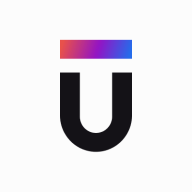

Find out in this report how the two API Security solutions compare in terms of features, pricing, service and support, easy of deployment, and ROI.

Apiiro is the leader in application security posture management (ASPM), unifying risk visibility, prioritization, and remediation with deep code analysis and runtime context.
Companies like Morgan Stanley, SoFi, Rakuten, and Navan leverage Apiiro's ASPM to...
Get complete application and risk visibility: Apiiro takes a deep, code-based approach to ASPM. Its Cloud Application Security Platform analyzes source code and pulls in runtime context to build a continuous, graph-based inventory of application and software supply chain components.
Prioritize risks with code-to-runtime context: With its proprietary Risk Graph™️, Apiiro contextualizes security alerts from third-party tools and native security solutions based on the likelihood and impact of risk to uniquely minimize alert backlogs and triage time by 95%.
Fix and prevent risks that matter—faster: By tying risks to code owners, providing LLM-enriched remediation guidance, and embedding risk-based guardrails directly into developer tools and workflows, Apiiro improves remediation times (MTTR) by up to 85%.
Apiiro's native security solutions include API security testing in code, secrets detection and validation, software bill of materials (SBOM) generation, sensitive data exposure prevention, software composition analysis (SCA), and CI/CD and SCM security.
Upwind is a dynamic platform for optimizing data management and enhancing analytic capabilities, renowned for its efficiency in handling large data sets effortlessly.
Utilized for generating actionable insights and improving decision-making processes, Upwind's robust infrastructure supports seamless integration with existing technology stacks. Its real-time analytics and intuitive design ensure a reliable performance, making it a top choice for organizations aiming to stay ahead. Users highlight the platform's ability to perform complex analysis swiftly, augmenting overall operational efficiency. While Upwind offers numerous benefits, there is room for improving its customization features and reducing occasional technical glitches. Its initial setup might be challenging, necessitating extensive guidance for new users.
What are the most valuable features of Upwind?
What benefits and ROI can users expect?
In industries ranging from finance to healthcare, Upwind is employed to enhance data-driven strategies, streamline workflows, and ensure informed decision-making processes. Businesses benefit from its integration capabilities that enable smooth adoption without overhauling current systems, and its real-time analytics support rapid response to market changes.
We monitor all API Security reviews to prevent fraudulent reviews and keep review quality high. We do not post reviews by company employees or direct competitors. We validate each review for authenticity via cross-reference with LinkedIn, and personal follow-up with the reviewer when necessary.